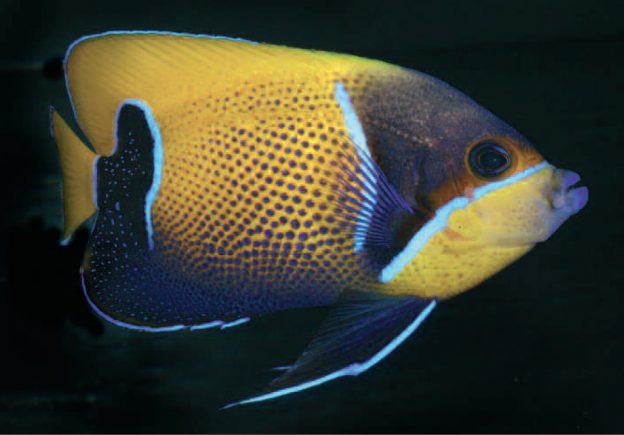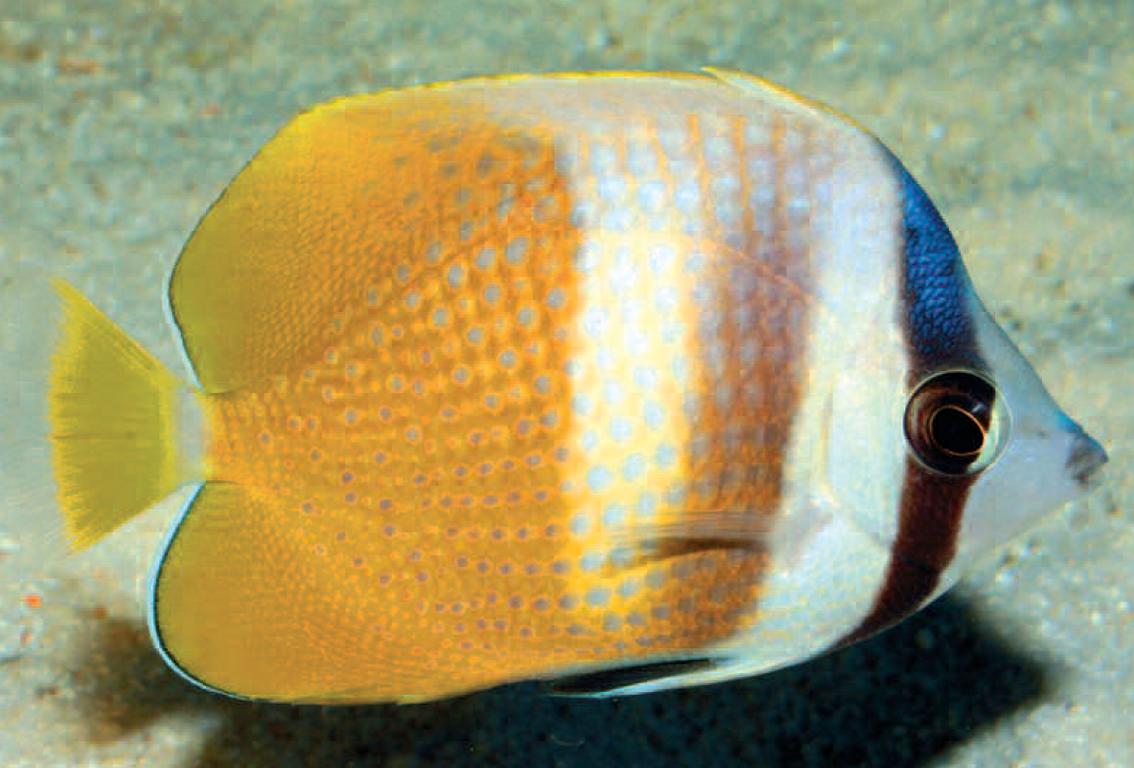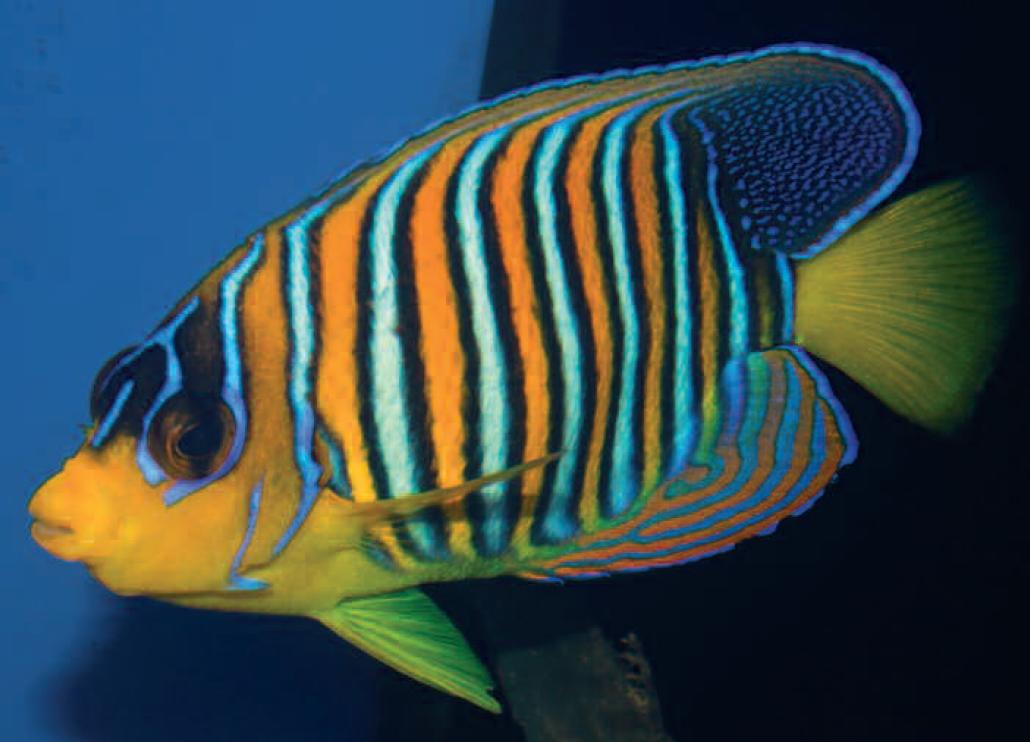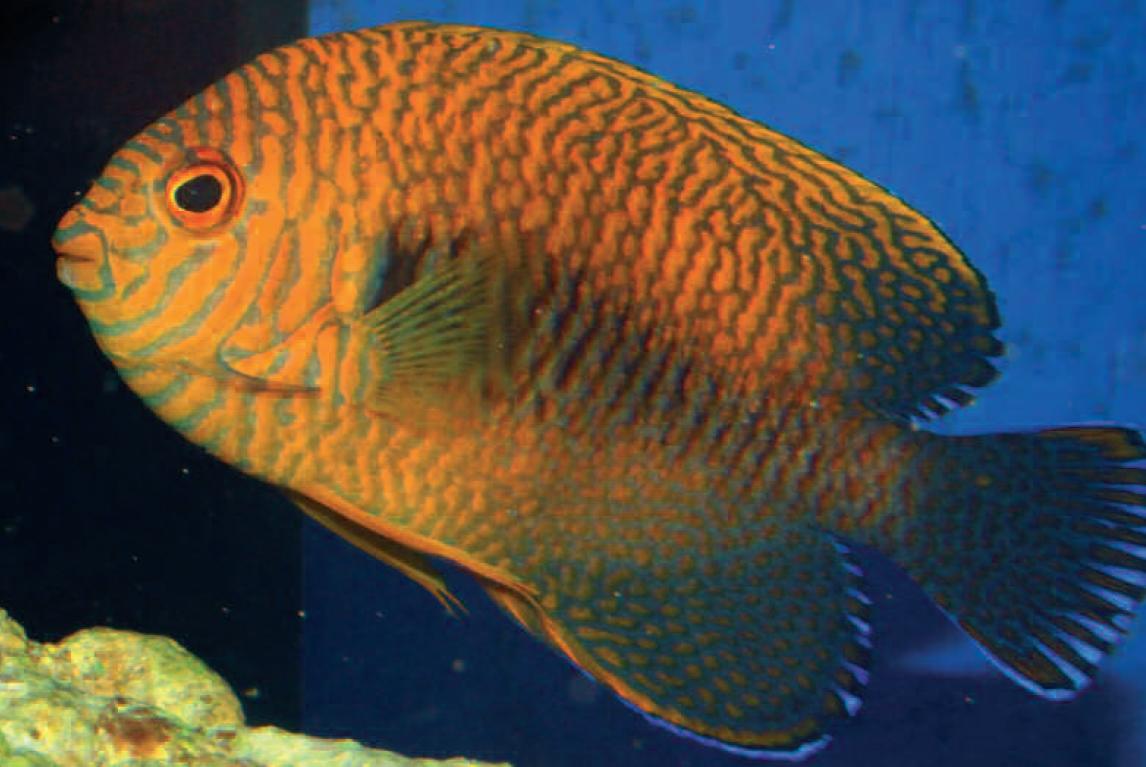
In the 1970s and early 1980s the focus of the marine aquarium hobby was the maintenance of fishes. The crowning glory of every fish collection was the butterfly- and angelfishes. Then, in the middle of the 1980s, there was a total ban on the importation of these fishes to Germany, based on the protection of species. This import ban was in force for around 10 years, and then it was repealed as illegal. Meanwhile, however, the marine aquarium hobby had changed a lot, and now the maintenance of reef aquaria was the focus of interest. So what is the situation regarding butterfly- and angelfishes in the hobby nowadays?
Generally speaking it can be said that interest has decreased considerably. The reasons for this are manifold.
Coral-eaters
Among the butterflyfishes in particular there are a whole set of species that have specialized in feeding on coral polyps in the wild. A number of species are so strongly specialized that they feed only on the polyps of very specific stony corals. These fishes do not, however, have any physiological requirement for coral polyps as food. If they can be weaned onto alternative foods then they can live for 15 years or more in the aquarium. But unfortunately this is achieved only very rarely. Nine out of ten butterflyfishes of this group will starve to death rather than accept other foods. So they are best left on the reef if you aren’t willing to satisfy their very special requirements. It is true that these fishes may find suitable food in a reef aquarium, but what aquarist wants to watch his lovingly cultivated stony corals end up as fish food ? In brief, nowadays these butterflyfishes are as good as never maintained in the aquarium, even though it is legal. If they do turn up once again in the aquarium trade then it will be by accident, because they were sent in error.

Continuous feeders
Another reason why butterfly- and angelfishes are less popular nowadays lies in their feeding behavior. The natural food that these fishes find on the reef is rather poor in nutrients and can be obtained only at the expense of a lot of time. The stomachs of these fishes are not designed to take in large amounts once a day and then digest them, but instead they feed all day long, constantly consuming small portions. But we like to feed small amounts and only rarely in the reef aquarium, in order to keep pollution of the water at the low levels liked by the corals. And if butterfly- and angelfishes are kept on short rations then they will constantly pick around on the corals, which eventually stop opening any more. By contrast, this characteristic is less important in fish-only aquaria. Here they can be fed small portions 6-8 times a day by an automated feeder, even when you aren’t at home. But who still keeps fish only tanks nowadays? Their feeding behavior is also a reason why nowadays many butterfly- and angelfishes are maintained only by a few specialists.

Gorgeous to look at and easy to keep
But despite all this many butterfly- and angelfishes are among the loveliest of all fishes! Many species are generally very suitable for maintenance in the reef aquarium, and some are even exceptionally easy to keep! These are the species that have specialized in feeding on plankton in the wild. They include the splendid wimplefishes (Heniochus spp.), the butterflyfishes of the genus Hemitaurichthys, the pygmy angelfishes (genus Centropyge), and the lyre-tail angelfishes of the genus Genicanthus. These fishes not only look gorgeous but they also leave corals totally in peace as they have no place in the natural food spectrum of the fishes. And finally, plankton feeders on the reef in the wild are specialized on fairly rare planktonic organisms; in other words they feed – just as in the aquarium – only when there something to eat and don’t go looking for food when there is none. In addition the pygmy angelfishes remain very small. They often grow to only 8 cm long (males), with females remaining 1-2 cm smaller. Pygmy angels can and should be kept in pairs or groups of one male and several females, and they will also spawn regularly in the aquarium. One of the wimplefish species (H. diphreustes) is a shoaling fish, while the rest prefer to live in pairs or small groups. Hemitaurichthys likewise appreciate the company of conspecifics, while the lyre-tail angelfishes again live in shoals in the wild; because, like so many other coral fishes (including the pygmy angels), they undergo a sex change from female to male, it is mostly females that make it into the trade. The strongest individual in a group will sooner or later change into a male. However lyretail angelfishes attain a length of 12-20 cm (depending on the species), and hence require lots of swimming space.

Useful species
A number of species of butterflyfishes are kept by aquarists to eliminate nuisance “glass roses” (Aiptasia spp.). These are the butterflyfishes of the genus Chelmon and the species Chaetodon kleinii. It should be understood that these fishes will also generally nibble at large-polyped corals if they are hungry. Hence they should be fed a generous and varied diet when Aiptasia are in short supply. The disadvantage of this biological method of combating Aiptasia is that both Chelmon and Chaetodon kleinii will consume hardly any glass roses once they have adapted to the easier pickings of substitute foods. Adding additional butterflyfishes that aren’t yet “habituated” is difficult to impossible, as established individuals react very aggressively towards newcomers. When Aiptasia are continuously attacked and eaten then the surviving specimens will contract into tiny, barely visible little clumps. Aquarists then assume prematurely that the plague has been overcome and start to feed the butterflyfishes heavily. The surviving Aiptasia then re-appear in all their former glory. Anyone who wants to buy one or more (it is always advisable to try and keep a group, as then there will be more behavior to observe) of these butterflyfishes to combat Aiptasia should keep them on short rations for a while after the apparent disappearance of the problem, even if this means risking attacks on corals and other sessile invertebrates.

“Brain-switchers”
Even though nowadays butterfly- and angelfishes generally play only a small secondary role in the overall action of the marine aquarium hobby, there are nevertheless a few of them that are so beautiful as to lead to people switching off their brains, getting out their wallets, and buying the gorgeous creatures. These species include a number of large angelfishes (Pomacanthus spp. and Holacanthus spp.). These species are in fact fairly easy to keep, but they grow rather large (between 15 and 40 cm) and there is always a risk of attacks on invertebrate tankmates. Another species belonging to the “brain-switcher” category is the Regal Angelfish (Pygoplites diacanthus). Many aquarists regard this as the loveliest fish of them all. But you should really purchase it only from expert aquarium stores and also make sure that it is feeding, as the Regal Angelfish is notorious for starving to death rather than taking substitute foods. In the wild these fishes feed on sponges. Acclimatizing them with live sponges as food usually works well, and sooner of later the majority of individuals will eat other foods as well, taking their lead from the other fishes in the aquarium. But there are also many individuals that are reluctant to abandon their diet of sponges. In the long term (the species can easily live for 10-15 years in the aquarium) that costs an awful lot. You really do need to be quite clear about these special requirements of the Regal Angelfish before purchasing, and keep your brain switched on!
A few basic rules in conclusion
In view of the large number of species of butterfly- and angelfishes it is essential to first of all seek information on the specific requirements of each and every species if you see it in the aquarium trade and are filled with the desire to keep it. Juveniles are ideally suited for acclimatizing. After the pelagic phase among the plankton that all species go through in the course of their larval development, at a length of 2-4 cm (depending on the species) they switch to life near the bottom. Many species do this in mangrove regions rather than on the reef. During this phase of their development the young fishes are very adaptable and usually settle into the aquarium readily. Even species regarded as impossible to keep present few or no problems at this age. Unfortunately, however, it is usually fairly large specimens that arrive in the trade. Specimens 6-8 cm in length still settle in quite well, but with larger fishes it varies with the individual. A knowledgeable dealer will show you the fish feeding if you are serious about purchasing. Good water quality – above all low germ levels – should be provided for all species. In the past these fishes were usually kept singly, but it is preferable to keep them in pairs or as a group. This involves introducing all individuals at the same time. Pairs should if possible be of different sizes as this will reduce aggression. Two adult males cannot be kept together in the same aquarium. Because butterfly- and angelfishes are very often infested with parasitic worms, you should read up on this and treat them if necessary.
Anzeige






